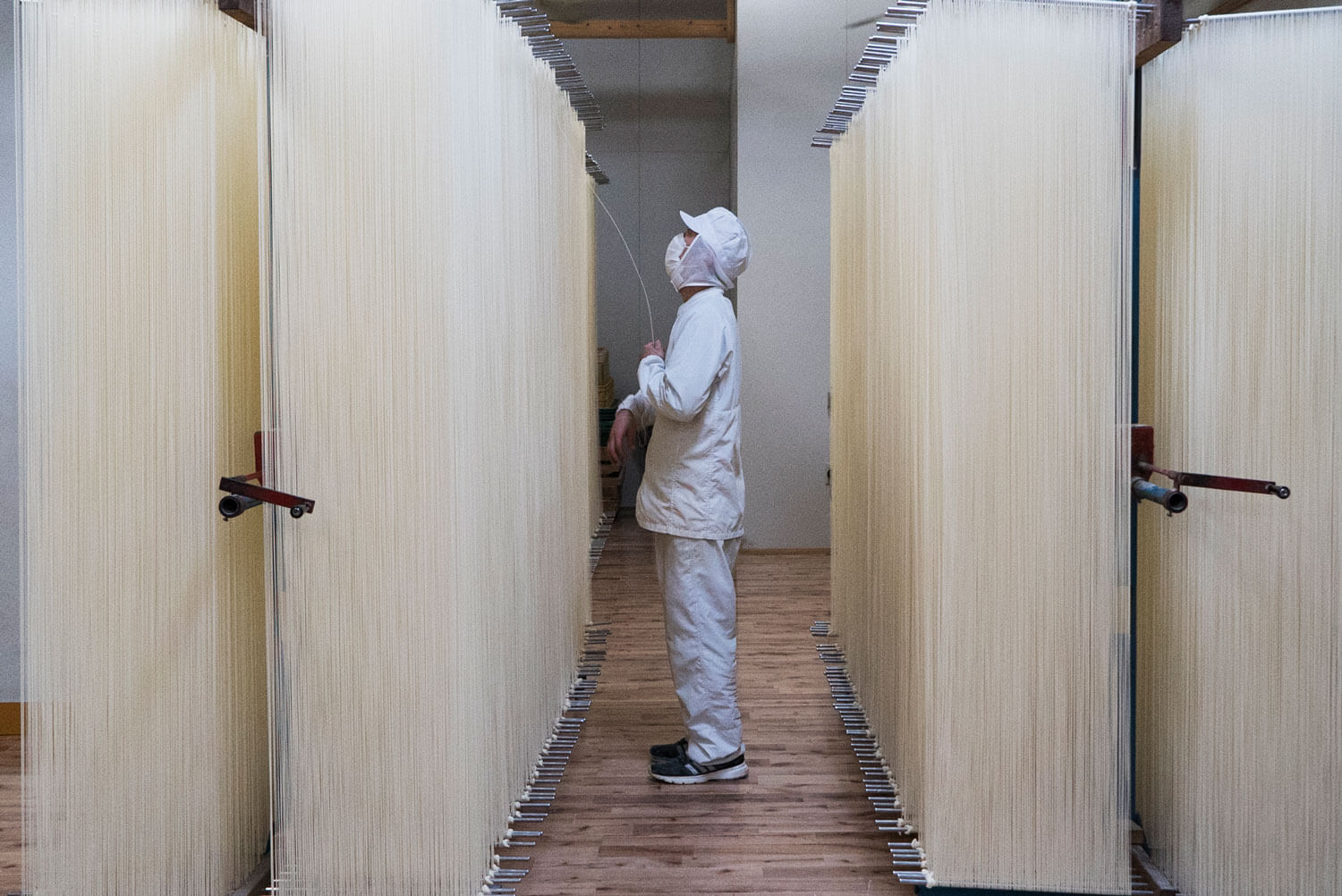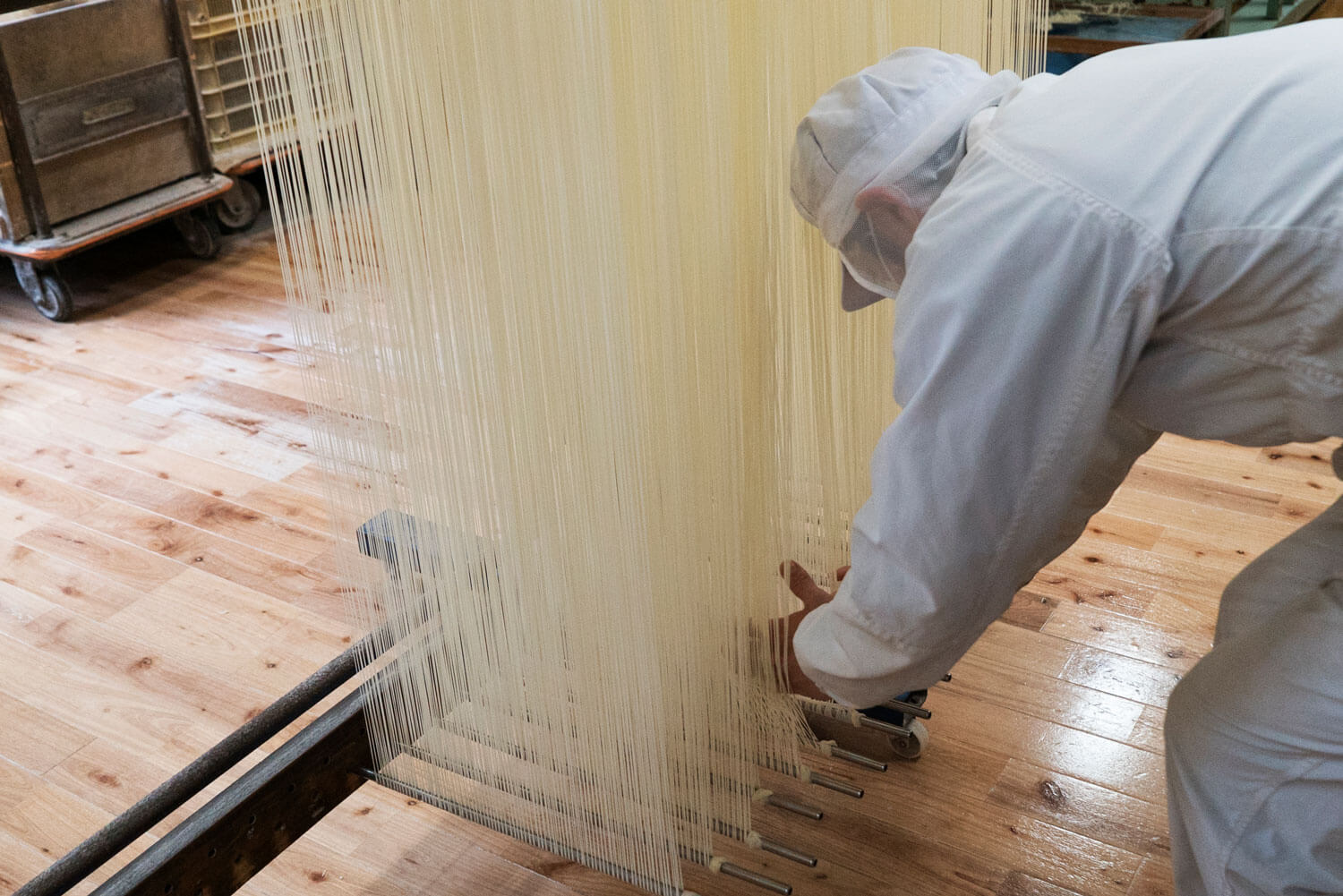Somen, the Versatile Noodle
Kyushu on the Table: Pairing Kyushu Specialties with French Cuisine #03
When one thinks of noodles, one’s mind usually goes to the tasty triumvirate: soba, udon, and ramen. However, a conversation about Japanese noodle culture would be amiss without including somen, which sadly is the only of these four noodles that spellcheck doesn’t recognise.
The sounds of the cicadas, the wind gently blowing bells, and the of slurping cold somen are the sounds of summer in Japan. Its texture, modestly firm and smooth, is the noodle’s charm. Soba, udon, and ramen require soup, but somen does well on its own.
Somen is a chameleon of sorts, as it blends beautifully with the food that surrounds it—if you appreciate its texture. It’s often used by French and Italian chefs. Sometimes they substitute it for capellini or use it as a soup ingredient. It finds a special place in rich soups such as pumpkin or mushroom potage.

Stretched and dried, the somen is often longer than the maker is tall.

Somen is carefully stretched by hand. The masters of this art know how to pay attention to the humidity and temperature and make adjustments to their noodles.
Nagasaki’s Minami-Shimabara City produces some of Japan’s favorite somen. Water determines the noodle’s texture more than anything, and the city’s subterranean river from Mt Unzen is the secret to the area’s tasty somen. Different locations along the river give the noodle different qualities. Minami-Shimabara’s specialty is an al dente noodle, so the somen maintains its firmness in both hot and cold soups. Maybe it’s time you explore your original recipe for somen.

Stretching the noodles carefully, the somen masters’ craft is seen in uniform noodles, and it’s a sight to behold. This is Shimabara-Tenobe Somen, which is made for the French market and comes in a distinctive blue package.
TRENDING
-
The Tattoos that Marked the Criminals of the Edo Period
Traditional tattoos were strong signifiers; murderers had head tattoos, while theft might result in an arm tattoo.

-
Paris, Tokyo: Robert Compagnon
With his co-chef and talented wife, Jessica Yang, Robert Compagnon opened one of the top new restaurants in Paris: Le Rigmarole.
 3:31
3:31 -
Chiharu Shiota, Red Threads of the Soul
Last year, more than 660,000 people visited the retrospective 'Chiharu Shiota: The Soul Trembles' exhibit at the Mori Art Museum.

-
‘Before Doubting Others, Doubt Yourself. Who Can Truly Say a Dish Isn’t What It Used to Be?’
In ‘A Non-Conformist’s Guide to Surviving Society’, author Satoshi Ogawa shares his strategies for navigating everyday life.

-
The Story of Sada Yacco, the Geisha who Bewitched Europe
Described by Dazed magazine as the first beauty influencer, she has been restored to her former glory since 2019.





